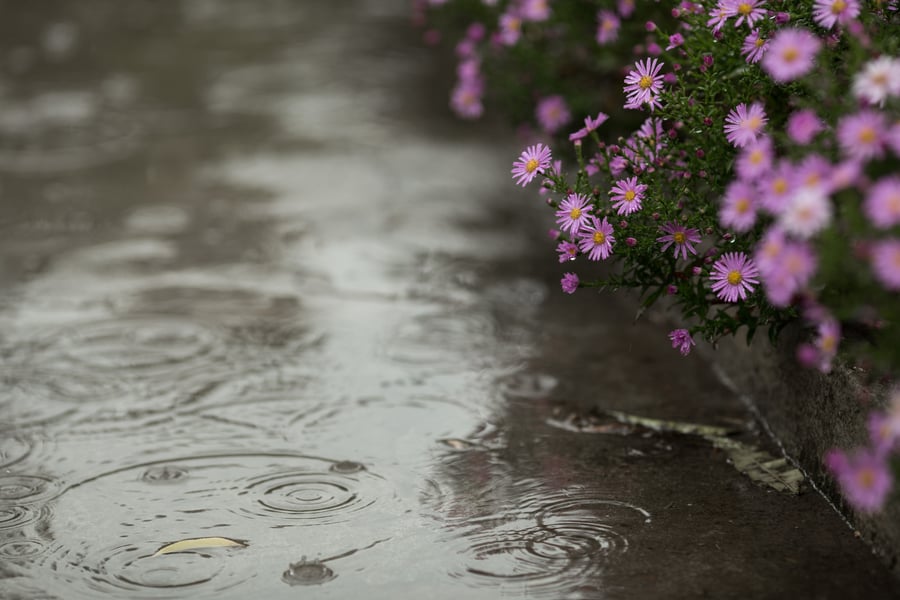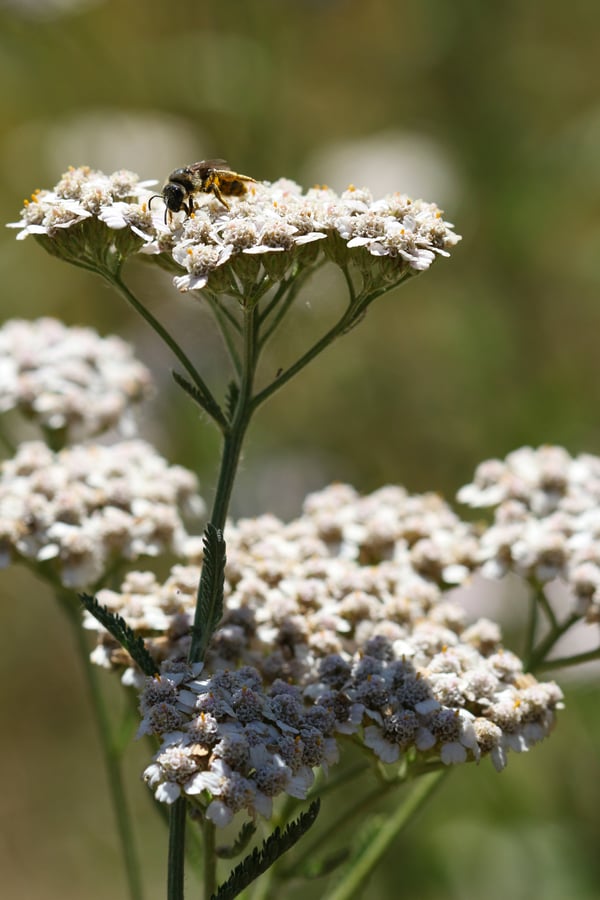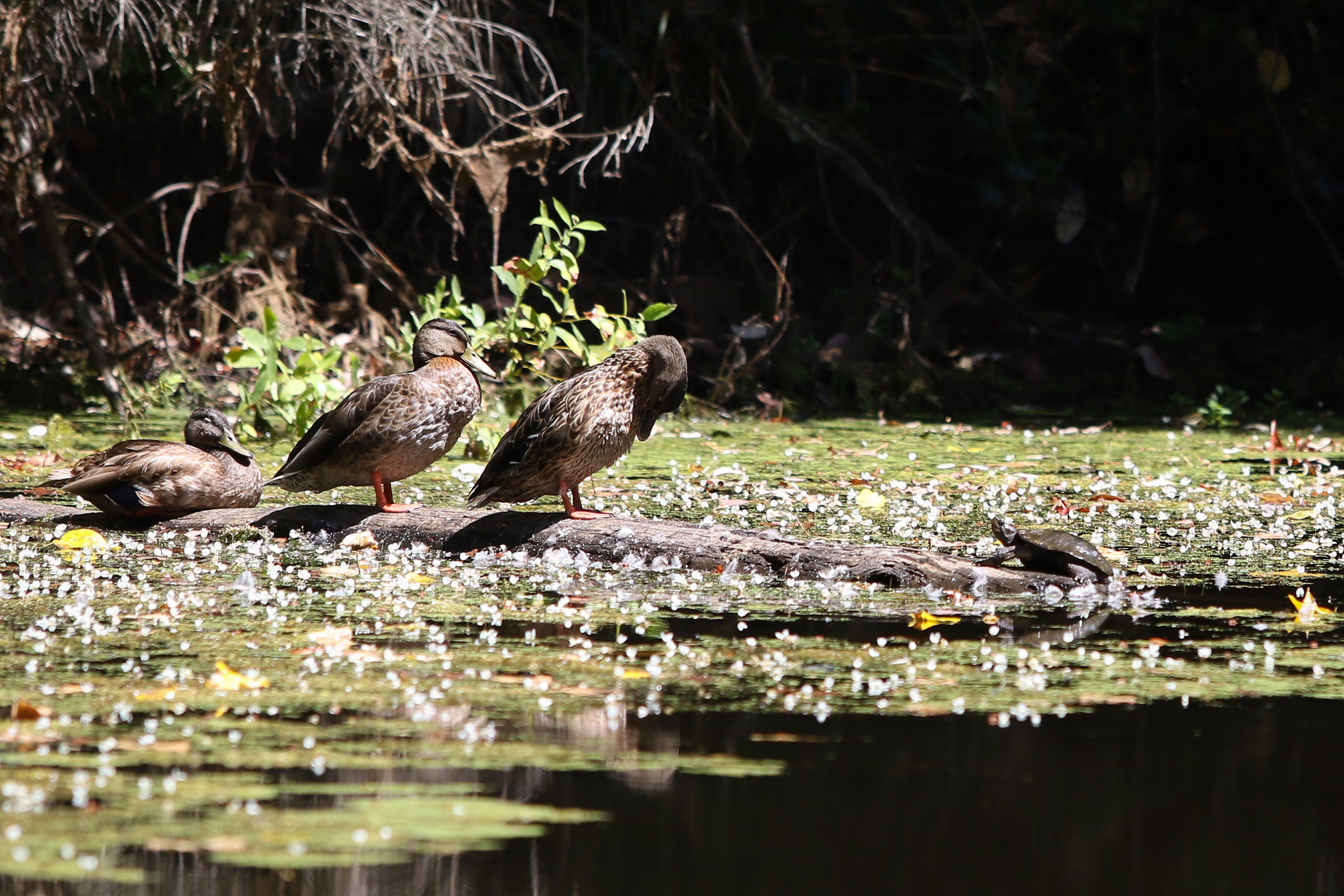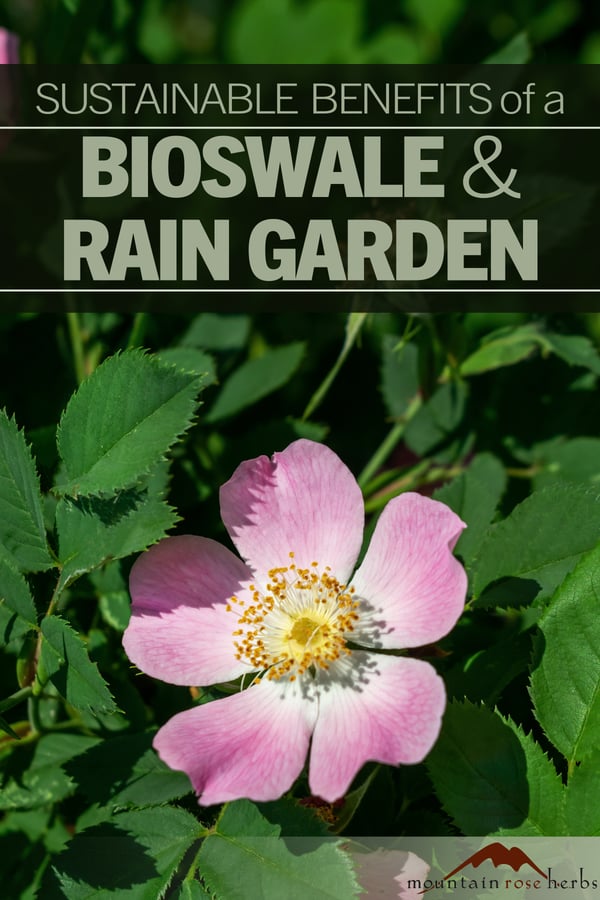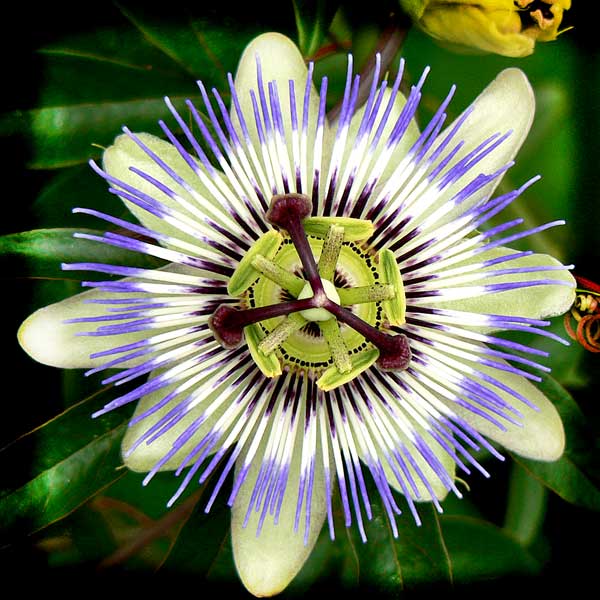In Oregon, winters are notoriously known for rainy days, cloudy skies, and wet everything. Some may find it challenging to live without consistent sunshine, but there are many benefits to a seasonal abundance of water. The bioregion of Cascadia consists of numerous rivers, streams, and waterways that carry life to the land, providing nourishment for all species from the top of mountains down to the Pacific Ocean. In some areas, annual rainfall can reach up to 200 inches! So, what do we do with all this water?
Here at Mountain Rose Herbs, we are always thinking about how our business impacts our local watershed and how our company decisions regarding landscaping, stormwater runoff, and rainwater management can affect habitats further downstream. Our headquarters in Eugene, Oregon are adjacent to Amazon Creek and the Stewart Pond Wildlife Refuge. We have a clear daily visual of the ecosystems directly impacted by our presence. We built a rain garden and bioswale to prevent pollution and debris from entering our beloved waterways.
WHAT IS A BIOSWALE & WHAT IS A RAIN GARDEN?
Rooftops, parking lots, roads, and sidewalks all block rainwater from soaking into the ground. As the water sits on these impervious surfaces, it picks up pollution and debris, carrying it into whatever stormwater-receiving creeks and streams ultimately catch the runoff. According to Meghan Murphy, environmental services technician in Springfield, Oregon, bioswales and rain gardens “help to recreate a more natural water cycle by taking that stormwater runoff and allowing it to soak back into the ground as it would have before development happened.”
Bioswales and rain gardens are designed with native plants to capture and absorb stormwater runoff. As the water is captured, it filters down through the plants and into the porous soil, attaching to the surface of soil particles, where pollutants are retained, and both roots and bacteria can use them. When the water reaches the streams and rivers, it is much healthier for riparian habitats, fish, and other wildlife.
What is the difference between a bioswale and a rain garden? Bioswales are designed as long, sloping, landscaped channels or drainage courses directing stormwater away from parking lots, curbs, sidewalks, and streets, giving it time to infiltrate the soil of the swale to remove pollution and debris. A rain garden, meanwhile, doesn’t channel water but is a vegetated depression designed to naturally capture and slowly absorb runoff, particularly on low gradients.
ENVIRONMENTAL & ECONOMIC BENEFITS
Today, our stormwater system—the rain garden, bioswale, and additional detention pond—manages 11,000 square feet of our stormwater runoff by capturing, cooling, and providing pre-treatment. This system also regularly captures debris from brakes, tires, and road sediment before they enter Amazon Creek. On the remainder of our property, we monitor water with a satellite-controlled irrigation system paired with strategic landscaping and self-sustained native plants that help us conserve our water use. The project has brought us both environmental and economic benefits, including:
- Flood resiliency: Because our stormwater is delayed in the rain garden and bioswale at the facility, the streams that generally receive the runoff are not inundated all at once. The runoff arrives over a more extended period, creating fewer issues with flooding, erosion, and cut stream banks.
- Reducing urban pollution: Our stormwater system helps manage excessive heat, vehicle pollution, and sediment.
- Supporting local wildlife & pollinators: The rain garden and bioswale are planted with native plants that provide food and shelter, often unavailable to pollinators and other native species in urban areas.
- Improved habitat downstream: By slowing, cooling, and cleaning stormwater, the habitat for fish, amphibians, and macro-invertebrates is enhanced in the storm-water-receiving streams.
- Savings in facility water use and costs: Our stormwater management system, combined with the satellite-controlled irrigation system, significantly reduces landscaping water use and the inherent costs.
Bioswales and rain gardens are relatively easy and inexpensive to install, particularly when compared to ongoing landscaping and water use costs. If you think your business, home, or neighborhood would be well served by a bioswale or rain garden, check with your local watershed council or government agencies for resources in your area.
At Mountain Rose Herbs, our approach to water management is part of our recognition that a facility as large as ours has an enormous impact on the environment. Investing in our bioswale, rain garden, and other bioretention landscaping is an investment in the community and the planet we call home.
WANT TO KNOW MORE ABOUT Our SUSTAINABILITy EFFORTS?
Learn How We Became TRUE Zero Waste Facility Certified
You may also enjoy:

